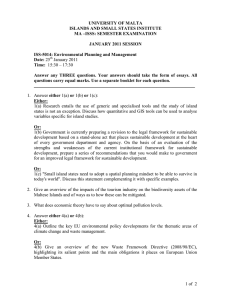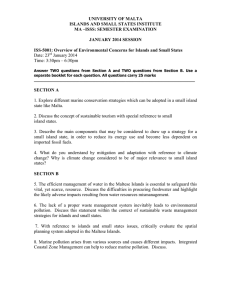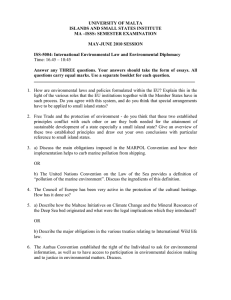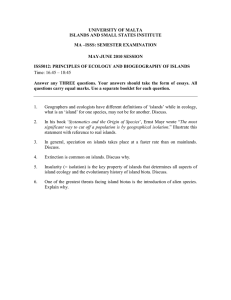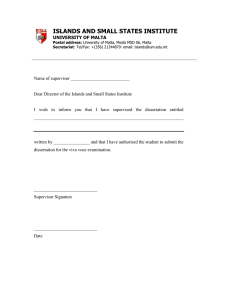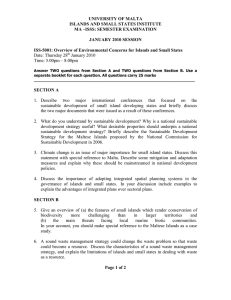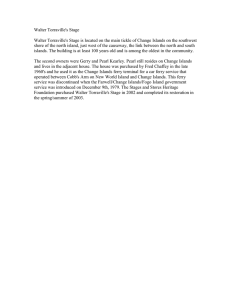MA –ISSS: SEMESTER EXAMINATION
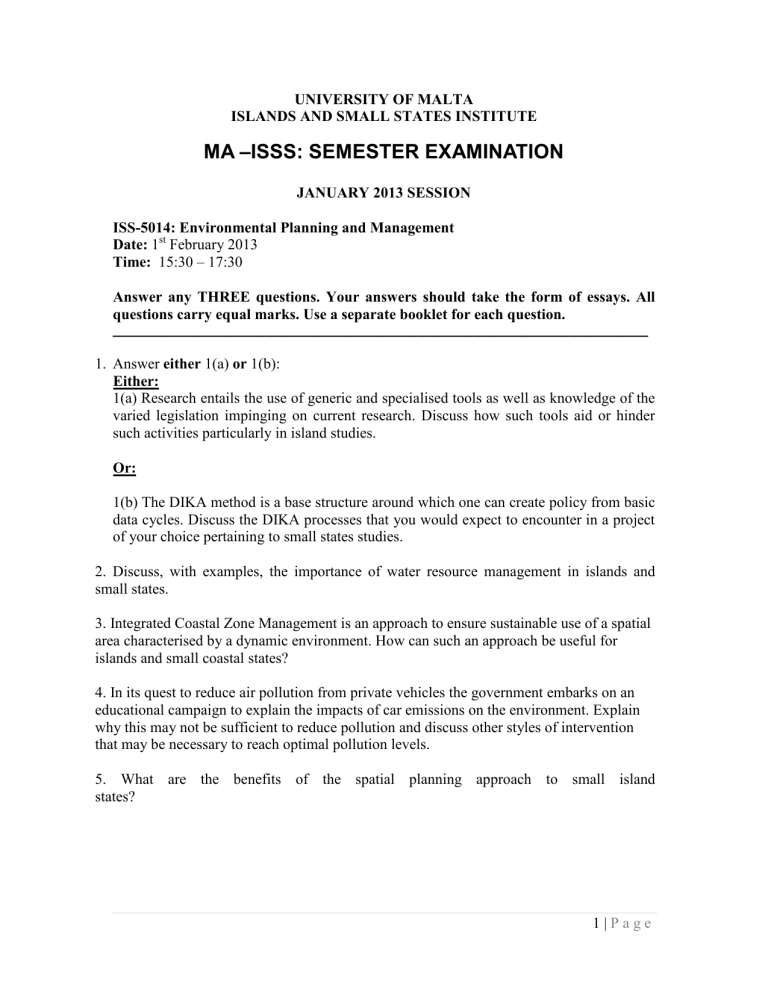
UNIVERSITY OF MALTA
ISLANDS AND SMALL STATES INSTITUTE
MA –ISSS: SEMESTER EXAMINATION
JANUARY 2013 SESSION
ISS-5014: Environmental Planning and Management
Date: 1 st
February 2013
Time: 15:30 – 17:30
Answer any THREE questions. Your answers should take the form of essays. All questions carry equal marks. Use a separate booklet for each question.
___________________________________________________________________
1.
Answer either 1(a) or 1(b):
Either:
1(a) Research entails the use of generic and specialised tools as well as knowledge of the varied legislation impinging on current research. Discuss how such tools aid or hinder such activities particularly in island studies.
Or:
1(b) The DIKA method is a base structure around which one can create policy from basic data cycles. Discuss the DIKA processes that you would expect to encounter in a project of your choice pertaining to small states studies.
2. Discuss, with examples, the importance of water resource management in islands and small states.
3. Integrated Coastal Zone Management is an approach to ensure sustainable use of a spatial area characterised by a dynamic environment. How can such an approach be useful for islands and small coastal states?
4. In its quest to reduce air pollution from private vehicles the government embarks on an educational campaign to explain the impacts of car emissions on the environment. Explain why this may not be sufficient to reduce pollution and discuss other styles of intervention that may be necessary to reach optimal pollution levels.
5. What are the benefits of the spatial planning approach to small island states?
1 | P a g e
6. Answer either 6(a) or 6(b):
Either:
6 (a). Outline and discuss the salient EU environmental policy developments as a result of the 6th Environment Action Programme, and describe the objectives and measures that the EU Commission is proposing for the upcoming Environment Programme.
Or:
6 (b). Outline and discuss, with reference to a named example, the structure to implement an environment management system, with a particular focus as to how employees are involved throughout the process of setting up such a system.
2 | P a g e
